For years, I have processed some of my aesthetic ideas here on Faith on View. I began discussing these ideas with the essays On The Beautiful, The Sublime, The Pretty, and the Ugly & Distinguishing between the Pretty and the Beautiful. When I first began developing a systematic theory of philosophical aesthetics I wrote about it here in a series called 10 Days of Aesthetics. Presently, it makes more sense to combine the ten short essays from that series into one more comprehensive essay. That is what follows.
These were my first thoughts on what has developed into a theory I am calling the Axis Theory. This theory is still a work in progress. Recently, this framework has expanded beyond aesthetics. But those ideas are still nascent and will not be developed here. My hope is that those who read this essay will interact and help me work through these ideas. I hope you challenge my thinking, for the good.
Introduction
Beauty and the sublime have historically been at the heart of philosophical aesthetics. Since the writings of Immanuel Kant and Edmund Burke, in the eighteenth century, aesthetics has been considered a philosophical category of its own whereas, previously, philosophers, even those with aesthetic concerns such as Plato, Aristotle, and Aquinas, did not view aesthetics as a separate category. More contemporary philosophers often became less concerned with beauty and more concerned with developing a philosophy of art. While art and beauty are clearly related they are also in many respects very different. In this essay, I will not seek to define art or in any way address its ontology. I will attempt to systematize the relationship between the concepts of beauty, sublime, pretty, and ugly while connecting the understanding of these terms not just to philosophical tradition but also to popular idiom. My systematization is a work in progress. As such, there are problems that I have yet to solve and others, I am sure, which I have yet to identify. But, I believe, the approach I am proposing provides a step forward.
There has never been complete agreement on what the terms addressed in this essay mean. The term pretty has received very little philosophical consideration. Ugly has received somewhat more. But while thinkers such as Kant employed the term ugly, he did so with very little explanation. Beauty and the sublime, on the other hand, have received a great deal of attention and have often been set in contrast to each other. Burke, for example, saw beauty and sublime as an opposing tension—beauty based on pleasure and sublime on pain—while Kant viewed them as mutually exclusive. But, neither Burke’s nor Kant’s distinctions have been universally accepted. Contemporary thought has tended to make these terms largely subjective and common vernacular seems to use these terms as if they exist on a continuum.
Continuum Theory
For most people today there is a continuum of aesthetic ranking. Thomas Leddy addresses this paradigm in his work on Everyday Aesthetics. There are many terms that can fit along this continuum but my focus will remain on the terms ugly, pretty, beauty, and sublime. However, one needs to understand that terms such as gorgeous, nice, or a myriad of other terms are either synonyms or fall on various points along the continuum. Carolyn Korsmeyer, for example, claimed, “[i]n certain respects pretty and beautiful can be considered points on a continuum of aesthetically pleasing appearance” and that beauty develops out of pretty by what Korsmeyer calls an “intensification of experience.” Aldo Leopold similarly argued that the “ability to perceive quality in nature begins, as in art, with the pretty. It expands through successive stages of the beautiful to values as yet uncaptured by language.” In a slightly different way, Sean McConnell also argued that ugly and beauty fall along a continuum of aesthetic judgment. Objects along this continuum are more or less ugly until they reach the point of “maximal quickening” or the point when they are considered beautiful.
This continuum of aesthetic judgment progresses from the least to the most; something akin to this:
Ugly < Pretty < Beauty < Sublime
These definitions picked from online dictionaries such as Merriam-Webster and Dictonary.com seem to support this way of thinking on a vernacular level.
Ugly: unpleasant to look at.
Pretty: pleasant to look at or listen to.
Beauty: the quality present in a thing or person that gives intense pleasure or deep satisfaction to the mind, whether arising from sensory manifestations, a meaningful design or pattern, or something else.
Sublime: very beautiful or good.
It must be noted that there are additional definitions that will be discussed later in reference to my Axis Theory. But, the italicized words in these examples show the progression along the continuum from ugly as unpleasant all the way to sublime as very beautiful (or very intense pleasure). It should be noted that the Continuum Theory often does not hold to ideas of danger and immeasurability as a necessary component of the sublime as one may find with Burke or Kant. The sublime is “merely” an extreme of beauty—a degree of beauty, if you will, and not something of a different character. In this theory ugly, pretty, beauty, and sublimity are all of the same character. The degree of aesthetic appreciation, pleasantness, or lack thereof, is what distinguishes one from the other.
Axis Theory
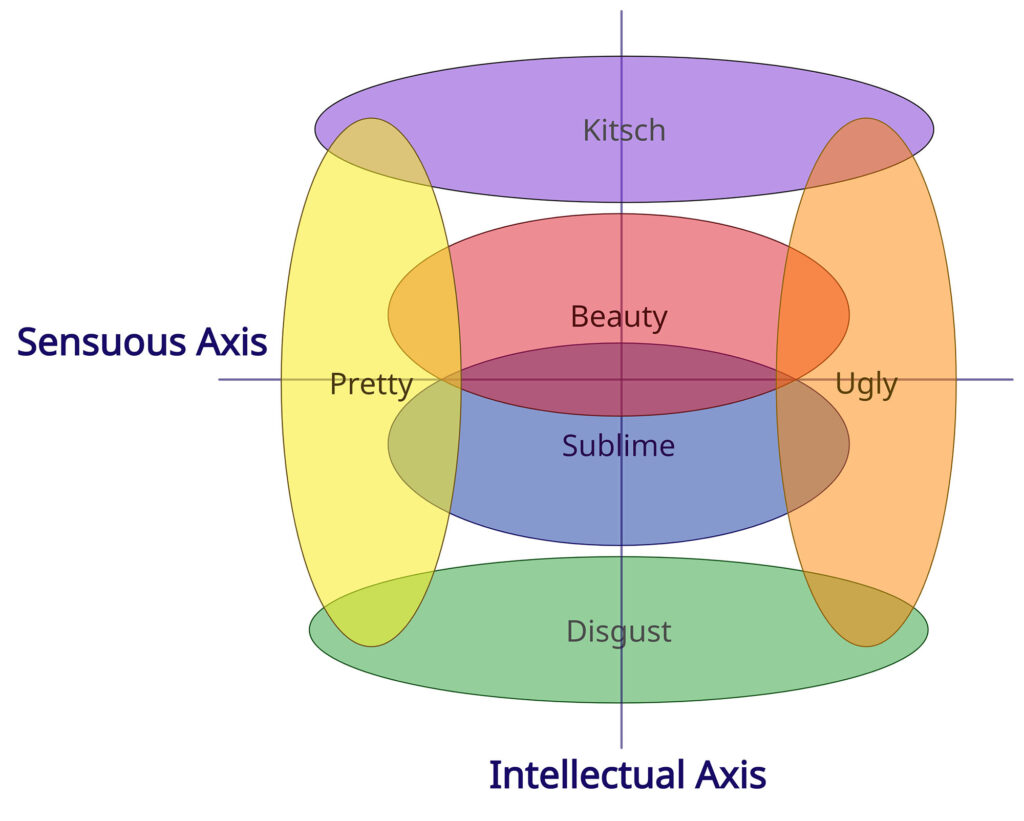
What I am proposing as the Axis Theory takes cues from historic conceptions of the sublime and the beautiful, especially Kant, and seeks to harmonize those terms with contemporary usage and my own intuition. As is demonstrated in the diagram, the Axis Theory envisions ugly, pretty, beauty, and sublimity in a more complex relationship than is imagined in the Continuum Theory. The first difference is that these concepts are not seen along a singular continuum separated only by degrees. Nor are they seen in opposition as they are with Kant and Burke. They are seen in relationship to each other with conceptual overlap. Further, they are seen as existing upon two distinct but intersecting axes.
One problem with using a Venn diagram to illustrate this theory is that it inherently implies proportion. When one looks at the diagram the natural assumption is that the six categories are largely separate but intersect in important ways. It must be understood that the diagram illustrates the concept of the intersection but does not represent the proportion. In all likelihood, there exists a proportionally small amount of beauty that is not intersecting with pretty, ugly, or sublime. The diagram is meant to illustrate only the structure of the theory and not the proportions in which the theory actually manifests. Key to understanding the diagram is the two-axis structure. Pretty and ugly fall along the Sensuous Axis because both those categories are reliant upon purely sensory input. On the other hand, beauty, sublime, kitsch, and disgust fall upon the Intellectual Axis as they rely on cognitive judgments.
Throughout this essay, I will rely upon and reference the following definitions. These definitions will be explicated as the essay progresses and are rooted in a Thomistic understanding of beauty with influence from both Kant and Hegel.
Beauty: That which when seen (perceived) causes intellectual delight.
Pretty: That which when seen (perceived) causes sensuous delight.
Ugly: That which when seen (perceived) causes sensuous displeasure.
Sublime: That which when seen (perceived) elevates the content beyond the form.
Disgust: That which when seen (perceived) causes intellectual revulsion (offense).
Kitsch: That which when seen (perceived) diminishes the content in relation to the form.
As can be deduced, these definitions are rooted in Jacques Maritan’s articulation of Thomas Aquinas’s definition of art from Art and Scholasticism, “the beautiful [is] that which, being seen, pleases.” Maritan goes on to say “The beautiful is what gives delight—not just any delight, but delight in knowing… Beauty is essentially an object of intelligence”. Thomistic conceptions of beauty often extend to include sensory, spiritual, and intellectual pleasure. However, it seems clear to me that there is a divide between intellectual pleasure, including spiritual, and sensory or sensuous pleasure. For example, what if a painting, as will be discussed later, causes intellectual pleasure but sensuous aversion? Or, if a painting causes sensuous delight but no intellectual delight? For this reason, intellectual and sensuous pleasures are split between the beautiful and the pretty.
The Sensuous Axis includes both the pretty and the ugly as these two categories rely on a sensuous, not an intellectual response. Pretty is the positive side of this response, sensuous delight, while ugly is the negative side, sensuous displeasure. This understanding is not without problems. Philosophically, ugly has often been conceived as the ontological opposite of beauty. However, with the spilt of the sensuous and the intellectual, it seems reasonable to view ugly as the ontological opposite of pretty. However, there are clearly those things that we would call morally ugly. In fact, while Kant spent little time in The Critique of Judgment discussing the concept of ugly the few ugly things he does mention fit within this category, “The Furies, diseases, the devastations of war, etc.” These would not count as sensuous displeasure but as intellectual or moral displeasure. Aesthetically though these concepts can be depicted in a way that is beautiful. For Kant, the concept of ugly and disgust are closely aligned. There is, I think, truth to that. However, in the system I am proposing ugly is seen as the ontological opposite of pretty, and disgust is the ontological opposite of beauty.
The Intellectual Axis is populated by beauty, sublime, kitsch, and disgust. Beauty, as the product of intellectual delight, clearly belongs on this axis. The sublime is a bit trickier. The sublime is tied historically to ideas of awe, fear, danger, magnitude, infinity, and even the infinitesimally small. These are all ideas that have to do with our limits—our limits of perception and cognition. Therefore the elevation which is referenced in the definition is an intellectual act. Likewise, kitsch marks a lack of this intellectual elevation and thus seems rightly situated on the intellectual axis. Disgust is somewhat more problematic, as will be discussed later. I this system disgust is referencing the sort of intellectual or moral ugliness that Kant referred to as ugly.
To better examine this system of thought, I will explore the relevant aesthetic categories in turn. The discussion will begin with those along the Sensual Axis and proceed to the Intellectual Axis.
The Pretty
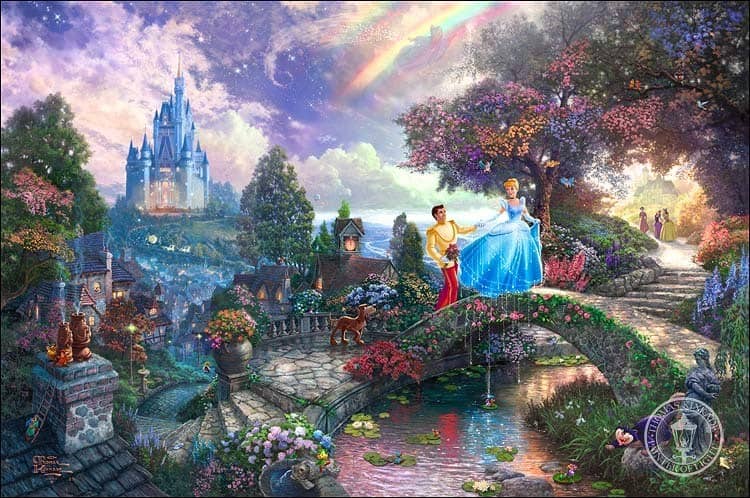
It is often said that “beauty is in the eye of the beholder.” For Kant such an idea was absurd. “It would be…laughable if a man who imagined anything to his own taste, thought to justify himself by saying: ‘This object…is beautiful for me.’ For he must not call it beautiful if it merely pleases him.” Kant believed that what was beautiful for one ought to be beautiful for all and that beauty should be viewed “as if it were a property of things.” Kant did, however, have a category for those things which caused sensuous delight. He called them pleasant or agreeable, depending on the translation. The pleasant is “based upon private feelings” which are limited to the individual. There is no universal notion of what is pleasant. Broccoli, for example, may be pleasant for one person and not for another. Kant used the example of Canary wine. Because pleasantness is determined by the sensory input of taste it is entirely subjective. It is not an intellectual judgment and not a judgment of taste, in Kant’s terminology. It is not dependent entirely on “disinterested satisfaction.” In essence, Kant’s category of pleasant is analogous to my category of pretty; but, for Kant, it is not an aesthetic category since there is no judgment of taste.
Thomas Leddy argues that pleasant, or agreeable, is not merely subjective. He believes it should be considered an aesthetic category. Leddy argues, “The problem of the agreeable vs. the beautiful is paralleled by the problem of distinguishing two kinds of pleasure, aesthetic and non-aesthetic.” He further states, “anything can be experienced aesthetically when framed in the right way.” For Leddy, unlike Kant, simply making the judgment of calling something agreeable, pleasant, or pretty moves the category, at least nominally, into the intellectual arena making it eligible to be an aesthetic category. This move of pretty to an aesthetic category puts Leddy in the Continuum Theory where pretty is “on the lower end of the aesthetic continuum.” I, however, argue that while pretty is “notoriously superficial,” as Leddy articulates, this is because pretty is sensuous rather than intellectual and cannot, therefore, provide depth. The sort of pretty to which Leddy refers is when an object is only pretty. However, if an object provides both sensuous and intellectual delight then the object is, in my conception, both pretty and beautiful.

As examples, I will discuss both Thomas Kinkade’s Disney painting Cinderella Wishes Upon A Dream and Albert Bierstadt’s, Looking Down Yosemite Valley. Kinkade’s works are notoriously pretty leading to broad popular appeal and tremendous commercial success. Critics cite the saccharine sentimentality in Kinkade’s work as one, among many, reasons to view his work as artistically inferior. The above picture of Disney’s Cinderella illustrates the issues well from several perspectives. Kinkade’s painting provides sensuous delight to the eye in the same way that cotton candy purchased at the county fair provides it for the tongue. There is an immediate visual pleasure but nothing deeper for the mind to grasp. By contrast, the sumptuously painted landscape by Bierstadt provides both sensuous pleasure and intellectual pleasure as the viewer is able to find a disinterested satisfaction in the composition.
Kinkade’s subject matter provides another avenue through which to see the distinction. In the Grimm version of the Cinderella story, both Cinderella and her step-sisters were physically attractive. The story was essentially about the difference between the beautiful, Cinderella, and the merely pretty, the step-sisters. Disney complicated the story by making the step-sisters ugly, which I will later postulate as the ontological opposite of pretty. The story no longer confronts only the truth about the inner character of the individuals, and their true beauty. It falsely connects the depth of beauty inextricably with the superficiality of prettiness. A Kinkade painting, like Grimm’s version of the step-sisters, is attractive to look at but lacks the deeper qualities that produce intellectual delight.
The pretty has received very little attention in philosophical circles. Thomas Leddy as part of his Everyday Aesthetics has paid some attention to the subject. But, as he points out he has written the only journal article on the subject and there are no philosophical encyclopedia entries on the pretty. The subject is problematic, in part, because there is very little philosophical tradition on it and in part because, as Leddy points out, “pretty is a heavily gendered concept.” However, the general association of pretty with the female gender need not stop its use. Beauty is also a strongly gendered concept. Many men are uncomfortable being called either pretty or beautiful. Beauty also has a philosophical tradition of being associated with the feminine while the sublime has been associated with the masculine. Like Leddy, I believe we can work toward a more egalitarian understanding of pretty which is not gender-weighted in a way that is harmful to women.
The Ugly
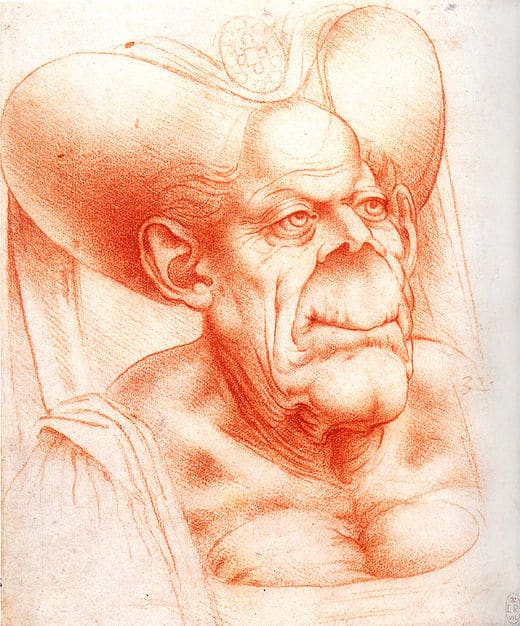
Ugly is the ontological opposite of pretty and fills the other side of the Sensuous Axis. Where pretty causes sensuous delight, the ugly causes sensuous displeasure. This is relatively evident. There are clearly objects that cause displeasure on a sheer aesthetic level. However, the question of a pure judgment of ugly is never addressed by Kant; he focuses entirely on beauty. Philosophers have differing opinions as to whether a Kantian system can allow for a judgment of the ugly. Without going into great detail, there are two camps: one believes a Kantian system cannot, for a variety of reasons, account for a pure judgment of ugly. The other believes that, for a variety of reasons, a Kantian system can account for a pure judgment of the ugly. The Axis Theory in some ways sides with both positions. The Kantian system integrates the concepts of ugly and disgust which are separated in the Axis Theory. Ugly, as conceived in the Axis Theory, would clearly not be a pure judgment as it relies entirely on sense perception. However, following the lead of Leddy’s Everyday Aesthetics ugly, like pretty, is still considered an aesthetic category. Disgust, as will be discussed later, likely would be considered a pure judgment since it is a judgment that can be made disinterestedly.
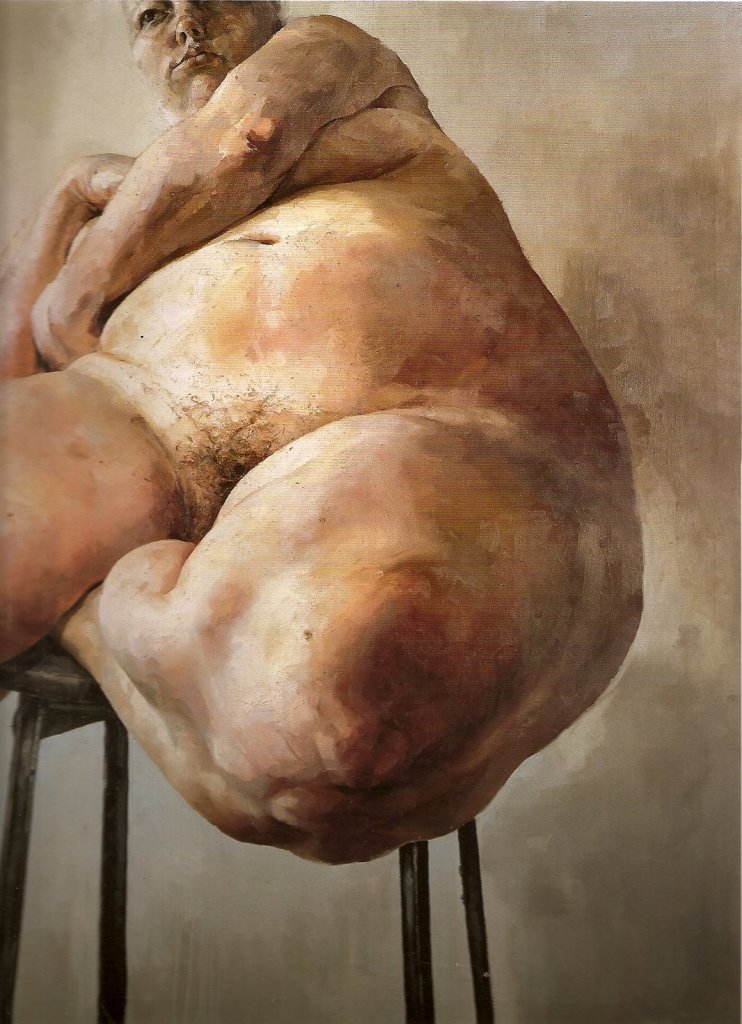
The challenge becomes when something causes both sensuous aversion and intellectual pleasure. This pleasure may occur in different ways. Da Vinci’s grotesques may move into the realm of beauty simply through the prodigious skill with which he worked. His skill alone is worthy of intellectual contemplation. Similarly, Jenny Seville’s work is beautifully executed. She is a master painter. The way she handles the paint and the beauty of her painting surface are almost unparalleled in the contemporary art scene. Yet, the subject matter is difficult. Saville intentionally paints subjects that we typically do not find pretty—obese women, deformed children, and transgender individuals. Her work creates displeasure. She complicates the issue by dealing with subject matter that some would find morally objectionable, transgendered persons while treating them with dignity that others would find completely moral.
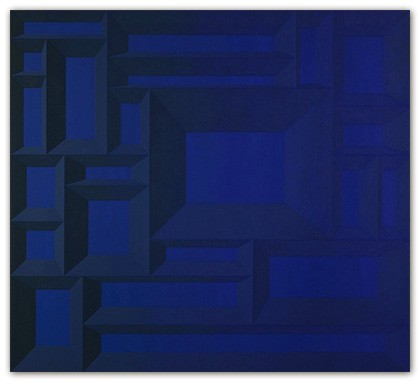
In a formalist language, Ross Neher similarly plays with the relationship between beauty and the ugly. His Sforza series is characterized by true formalist beauty. Pieces from this series such as Blue Aruna exhibit both an impressive technical acumen and a seductive color pallet that invite the viewer’s disinterested contemplation as well as a positive sensuous reaction to the luscious materiality. However, some works in this series employ color in a way that literally causes physical discomfort, at least when seen in person. Sforza I is a good example of this. While Neher’s technical acumen is just as evident in this work, the color combinations cause physical displeasure as the disharmonious tension among the colors causes the viewer to want to look away even as the skill of the work beckons the viewer to want to explore the forms and vexing color relationships. There is no sensuous delight in these pieces. In a common idiom, a viewer may simply say the colors are ugly. Yet the colors are intrinsic to the character of the piece and cannot be easily bifurcated. While Blue Aruna could easily be called both pretty, Sforza I by contrast could hardly be called pretty yet has an unmitigated formal beauty. Blue Aruna, in the Venn diagram, would fall in the overlapping section of the pretty and the beautiful ellipses. It would fall in the overlap. Sforza I would be placed on the other side of the diagram where beauty and ugly intersect.
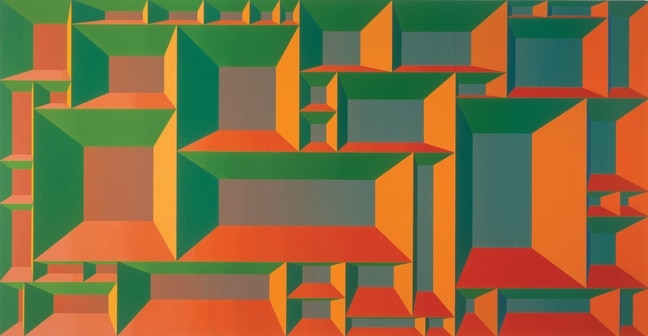
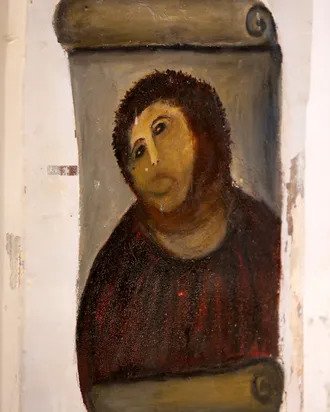
Ugly does not always need to be complicated with its overlap with other aesthetic categories though the ability for categories to interest in meaningful ways, is to my mind, one of the most compelling aspects of this conception. There are certainly times when ugly as with any other category simply stands alone. One such example is the infamous Potato Jesus or Monkey Christ, a botched restoration of a 1930 Homo Ecce fresco by Spanish painter Elías García Martínez. The painfully poorly executed restoration has become famous precisely because of its failures aesthetically and technically. While it could be argued that the piece pushes toward the overlap of ugly and kitsch, it does not fit well within kitsch for reasons that will be clarified below. This piece is simply ugly.
An additional complication happens when something does not cause sensuous but moral or intellectual displeasure. Pornography is one example. Pornography causes a sensuous delight, is pretty, but not an intellectual one, and therefore is not beautiful. On the Sensuous Axis, it does not cause displeasure so it is not ugly but it would be considered by many to be morally ugly. This would potentially fall under the category of disgust which will be examined shortly.
The Beautiful
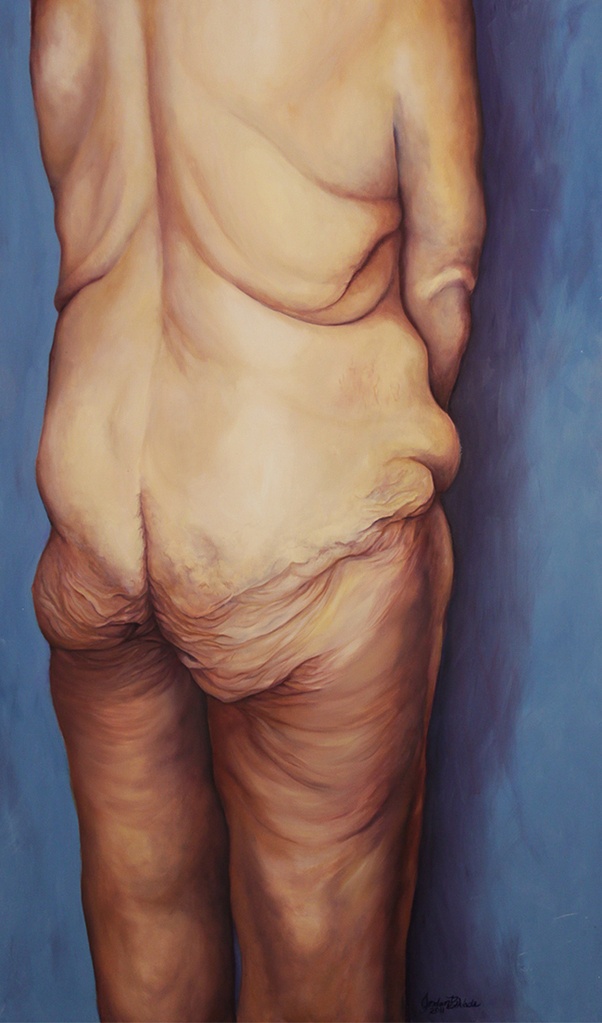
Historically beauty and aesthetics go hand in hand. The question of beauty is the primary question of aesthetics. In the Thomist tradition, beauty is considered a transcendental along with concepts such as the good and the true. The Thomists argue that because of this beauty is objective, intellectual, moral, and universal. Kant, likewise, believed in an universality of beauty. However, his universality was not because of beauty’s objective nature. He believed in a “subjective universality.” Kant argued that while people will speak “as if beauty were a characteristic of the object” the reality is rather that the judgment of taste “must claim validity for every man, without this universality depending on Objects.” This judgment is reliant on the conscious separation of interest or what he calls “disinterested satisfaction.” While the Axis Theory relies more on a Thomistic definition of beauty, this concept of disinterestedness is crucial in determining the difference between intellectual and sensuous delight. As Kant claims, “That which pleases the senses in sensation is Pleasant.” Therefore, it is the disinterested contemplation, that is crucial to a Kantian understanding of beauty, that differentiates between intellectual and sensuous delight.
One can see a connection to the Continuum Theory in this language. In some ways, it is true that there is something greater in the beautiful than the pretty. The engagement of what Roger Scruton calls the “higher life” can be viewed as along the same aesthetic continuum. However, this is a mistake. There is a qualitative difference between the Sensuous Axis and the Intellectual Axis that is the result not just of moving higher on a continuum but of engaging a different orientation. So, beauty does imply something more than prettiness. But due to the axial shift, something beautiful can also be ugly. Jordan Wade’s painting Human Drapery 3 illustrates the point well. The painting is, I think, both undeniably beautiful and ugly. I might even argue that there is an element of sublime in this painting. But this painting is not pretty. As with the pieces discussed earlier, there is a sensuous displeasure associated with viewing this painting. Yet, the wrinkled isolated figure is endowed, through the excellent craft and luscious handling of the paint, with dignity. This tension between the brokenness of the figure and the figure’s inherent dignity captivates the intellect and imagination with a pure disinterested delight. There is no sensuous pleasure gained by viewing this painting only a pleasure located in the intellect.
Kitsch

Kitsch is often clearly linked to the pretty. Certainly, that is the case with the works of Thomas Kinkade. Roger Scruton writes, “The world of kitsch is a world of make-believe, of permanent childhood, in which every day is Christmas. In such a world, death does not really happen.” This seems like a near-perfect description of Kinkade’s oeuvre. For Scruton though, pretty and kitsch are not synonymous. Scruton believes that kitsch is pretense. But it is a pretense by both the maker and the viewer. It is a situation where both are pretending that there is a greater depth to the object than the object actually possesses. As he says, “Kitsch art is pretending to express something, and you, in accepting it, are pretending to feel.” Kitsch arrives, for Scruton, when one pretends to have the “higher life” “the life of the spirit” without investing the intellectual and spiritual energy to, in fact, have it. It is fake; but importantly for Scruton, it is to fake that which cannot be faked. This can be seen in the example of Kinkade. What makes Kinkade kitsch is not just that it is pretty but through that prettiness, it pretends to have the depth of something beautiful.

Finally, returning to if something can be pretty without also being kitsch. Scruton provides a way forward to this question when he argues, “The opposite of kitsch is not sophistication but innocence. Kitsch art is pretending to express something, and you, in accepting it, are pretending to feel.” So what of the pretty that does not pretend to be more than it is? Potentially the “innocent” art that is made for young girls such as posters of unicorns and horses would qualify. They are not aspiring to be anything profound but only pretty things to delight young girls. By the same token, posters of transformers on the walls of young boys’ rooms would also qualify. Still, most people would consider such posters kitsch. Perhaps good design would fall into the category of pretty but neither beautiful nor kitsch. Great design, I do think, pushes toward the beautiful but something like a Longaberger basket may classify as pretty while not pretending to be more. Does Scruton posit too narrow an understanding of kitsch or is the common conception of kitsch too broad? I am not certain, but his distinction does at the very least provide a lens through which to think on these issues.
Disgust

If ugly is the ontological opposite of pretty then disgust is the ontological opposite of beauty. Kant closely ties the concepts of disgust and ugly. However, while Kant is ambiguous about ugly he clearly locates disgust within the imagination, as is beauty. He claims that disgust will destroy “all aesthetical satisfaction.” In fact, he claims that disgust ultimately makes it impossible to view an object as beautiful.
This understanding is not without issues and Mojca Kuplen problematizes it demonstrating that certain forms of disgust do not negate the apprehension of beauty. In one example, she points to Andre Serrano’s Piss Christ which some people find disgusting on a moral level since it submerges a crucifix in the artist’s urine. However, Kuplen argues that people are still able to appreciate the beauty of the photo despite their disgust. It may be that the disgust some viewers feel is what Kuplen identifies as animal-reminder disgust, a type of disgust that is consistent with Kant’s understanding. According to Kuplen, “This category of disgust includes violations of the body envelope (amputations, injuries), sexual deviations, and hygienic concerns, that is, deviations from well-established standards of cleanliness and purity in all three spheres.” Still, this form of disgust is able to be transcended through abstraction or a greater context. However, to Kuplen disgust for disgust’s sake is largely impossible to transcend. Therefore works such as the Chapman Brother’s Sex and Death or their cumbersomely named Zygote Acceleration Biogenetic, De-Sublimated Libidinal Model are, in the Kantian sense, unable to be considered beautiful.
While intuitively, there seems to be a strong element of truth to this understanding of disgust, the problematization is still difficult. Logically, there seems that there should be an ontological opposite to beauty. But how that opposite operates is less clear.
Returning to Serrano’s Piss Christ may provide some illumination. Kuplen argues, in contrast to Kant, that viewers are able to simultaneously judge the piece to be both disgusting and beautiful. If this is true, it questions the premiss of disgust and beauty as ontological opposites. Is it true that Piss Christ or any other aesthetic object is capable of simultaneously causing intellectual delight and revulsion?
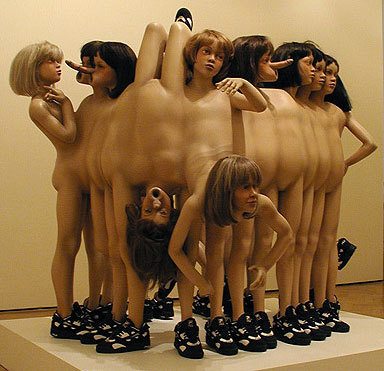
I believe there are three parts to the answer.
First, it is often debated as to whether or not beauty is subjective, in the eye of the beholder, or objective, an intrinsic characteristic of the object. Kantian aesthetics rely on the judgment of taste by the subject making beauty by definition subjective. Yet for Kant, there was a universal oughtness to this judgment. He believed all ought to make the same judgment about an object’s beauty. So while Kant’s system required the subject to make a judgment of taste about the object, he simultaneously believed that the object’s beauty should be viewed as a property of the object.
Similar to the Kantian system, the Axis Theory revolves around the subject’s intellectual or sensuous judgment. There is no oughtness along the sensuous axis as those judgments are based on sensory input. But along the intellectual axis, there exists an oughtness. From a theistic perspective, this oughtness is derived from aligning with the mind of God. In other words, we ought to judge as beautiful that which God judges as beautiful. From a non-theistic perspective, it is still possible for an object to intrinsically poses the qualities that lead to the judgment of beauty while still requiring that judgment. In this case, the subject ought to make a judgment that is consonant with the reality of the object’s character. This notion of universal subjectivity works neatly within a theistic perspective. From a non-theistic perspective, it comes perilously close to saying that beauty is objective. The difference is that in a non-theistic system aesthetics are human categories, not natural categories. In other words, nothing is intrinsically beautiful, kitsch, sublime, or disgusting. They do possess intrinsic characteristics that align with these concepts. But judgment is needed for the label to be actualized.
In some ways, this is akin to the age-old question: does a tree that falls in the forest make a sound if no one is there to hear it? It makes sound waves but sound requires an ear to process and a mind to apprehend. Likewise, is a distant galaxy beautiful before eyes are laid upon it, or did it require the invention of high-powered telescopes to produce images of far-away galaxies that humans then judge as beautiful? It is the mind that is required to apprehend the sound or see the image, and then make a judgment about the object. Put differently, in a non-theistic conception, aesthetic judgments describe the relationship of the subject to the intrinsic character of the object rather than the object itself.
Universal subjectivity means that it is possible for persons to misjudge aesthetic categories. They may make judgments that they ought not. This could be the case with Serrano’s Piss Christ. While it is true that some people find the piece “disgusting on a moral level.” It is possible that this judgment is made because of a misunderstanding of the piece’s meaning. The moral disgust is likely because of a feeling that the piece is sacrilegious, disrespecting a sacred symbol. Serrano, however, is a lifelong Christian who was raised Catholic. He describes Piss Christ as working with the symbols of his faith. Ted Potter director of the Southeastern Center for Contemporary Art describes the work as exploring “how spiritual belief has been exploited and spiritual values debased.” Serrano himself argues, “What it symbolizes is the way Christ died: the blood came out of him but so did the piss and the shit. Maybe if Piss Christ upsets you, it’s because it gives some sense of what the crucifixion actually was like.” This reading puts Piss Christ in the tradition of Matthias Grünewald’s Isenheim Altarpiece. The moral disgust referenced by Kuplen rest on a misunderstanding of the piece’s message. Because of this misunderstanding of the photograph’s context, some make a judgment they ought not.
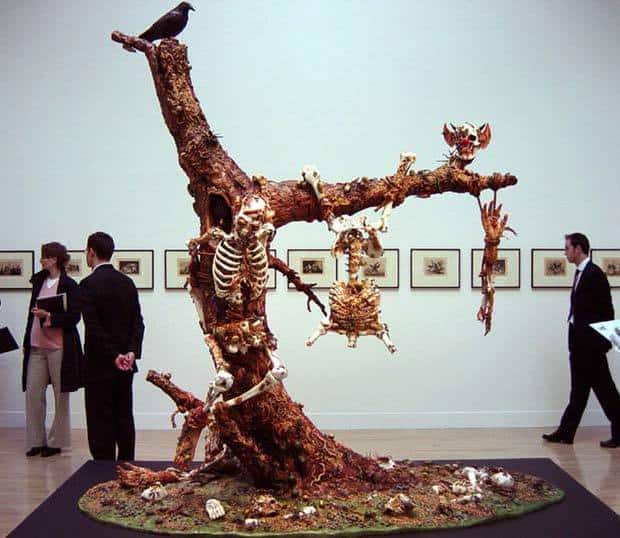
To underscore the point, Kuplen’s discussion of disgust engages the philosophical work of Kant with more contemporary work such as that of psychologist Paul Rozin. It is from Rozin that Kuplen gleans the category of animal-reminder disgust. But In his system, Rozin postulates two other forms of disgust: core disgust, which is related to food rejection, and socio-moral disgust, which is tied to the cultural “webs of significance” upon which moral and social life are based. In Kuplen’s research, he found that the American web of significance revolved around individual significance while for the Japanese it revolved around communal integration, and for the Hopi human and ecological balance. So while socio-moral disgust is universal it manifests differently. In the American context of Chicago, racism often engendered socio-moral disgust because it violates individual dignity. But it is not unreasonable to surmise that in a different, perhaps earlier American context racism would support a particular web of significance, and concepts such as interracial dating or marriage would cause socio-moral disgust. Not all socio-moral disgust is equal and in the racial examples, the oughtness of judgments of disgust is clearly discernable.
Second, intellectual delight can be discomforting without causing revulsion. Disinterested contemplation does not require an ecstatic response. They can coincide. But there are things and concepts that can be both beautiful and discomforting. A simple example of this is memories of a departed loved one. These beautiful memories elicit intellectual delight and often sadness. The discomfort of that sadness is not revulsion. The bitter-sweet memories reflect both intellectual delight and the discomfort of the loss. A more visceral example comes from Christian theology- Cross. Richard Viladesau’s book The Beauty and the Scandal of the Cross is dedicated to this very issue. Simply put, one can both find discomfort in the physical and emotional torture of Christ during his passion and find beauty in the act of love and sacrifice. The Cross for Christians is not revolting it is a discomforting delight.
Piss Christ is certainly a challenging piece. This is part of its beauty. But it is not simultaneously beautiful and disgusting. The moral disgust that Kuplen notes could either be a misjudgment or an example of discomforting delight.
The Venn diagram for the Axis Theory illustrates that disgust is ontologically distinct from all other categories on the intellectual axis. As Kuplen finally concludes, in agreement with Kant, disgust is an “aesthetic displeasure.” It does not possess the naivete of kitsch, the delight of beauty, or the soon-to-be-discussed transcendence of the sublime. She argues that disgust is “strong visceral and physiological” destroying the possibility of disinterested contemplation. Kuplen continues:
Thus, when we do find a disgusting object aesthetically attractive, as in the case of some works of art, it is because we do not have a genuine disgust reaction but the displeasure of disgust in which the original disgust reaction is suspended. What we have is a deceptive or “pseudo-disgust” experience that is still painful, yet without the sensuous impact that would destroy the aesthetic illusion. I believe that such works of art, rather than being named “disgusting beauties,” more properly deserve to fall under the category of what Korsmeyer calls the phenomenon of terrible beauties, “…beauty that is bound up with the arousal of discomforting emotions.”
When beauty is able to be apprehended in a work of art it cannot truly fit within the category of disgust. It is a “terrible beauty” or what I earlier referred to as discomforting delight. Returning to Piss Christ, it is not moral disgust as some viewers identify but a moral discomfort that the work engenders. Discomfort still allows for the disinterested contemplation of the photo.
Kuplen is correct that both disgust and ugliness “have in common a dependence on a negative feeling value, a feeling of displeasure.” She is also correct in identifying a substantive difference between the nature of ugliness and disgust. She connects ugliness to formal properties and disgust to content and meaning. This distinction closely aligns with the distinction between the sensuous and the intellectual axes in the Axis Theory. Though Kuplen does state that “ugly can, by definition, never be regarded as beautiful.” I tend, however, to side with Kant who claimed that while the ugly could be beautifully portrayed, disgust by nature cannot cohabitate with beauty.
The ability of disgust and ugliness to coexist seems self-evident and is readily identified in works such as the Chapman Brother’s sculpture Sex and Death. Less intuitive is the intersection of disgust and pretty. One example may be the sensuous, even sensual, work of Jeff Koons in his series Made in Heaven. In this series, he shows the intimate relationship between him and his pornstar wife Cicciolina. Here the sensuous delight of the work meets with the socio-moral disgust of displaying a couple’s intimate relationship.
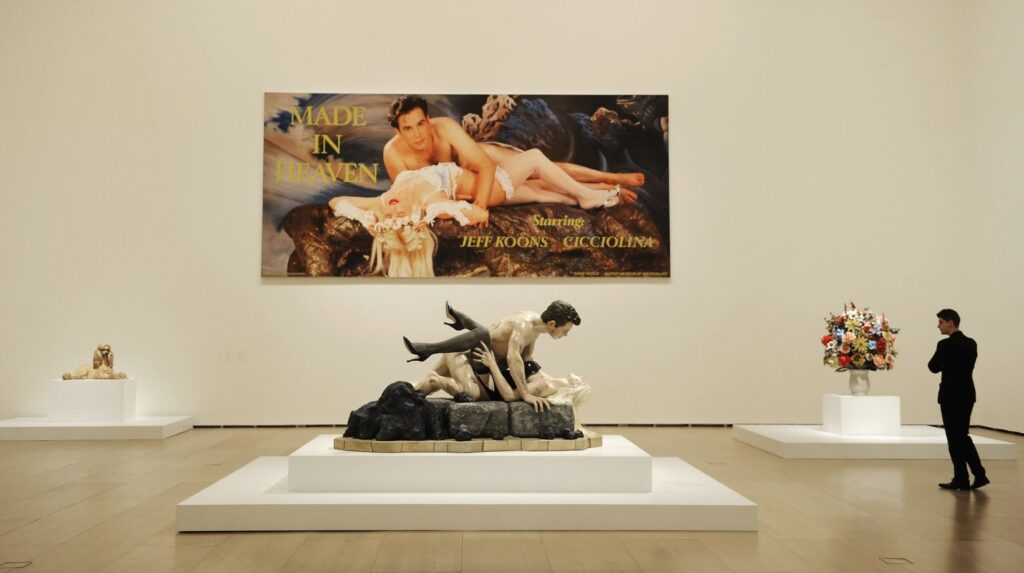
The Sublime
Kant’s distinctions about the sublime, and, in fact, the two forms of sublime Mathematical and Dynamical, are extremely nuanced and cannot be fully addressed here. But, there are some important points that help lead to the Axis Theory’s understanding of the sublime. Kant begins his discussion of the sublime by claiming that the beautiful and the sublime agree with each other in that they both “please in themselves,” are “not dependent on sensation,” and are “universally valid for every subject.” Importantly, this clearly aligns Kant’s view of the sublime along the Intellectual Axis. Kant does, however, distinguish between the beautiful and sublime in several important ways. Boundaries, for Kant, are a crucial aspect of beauty, while boundlessness is a component of the sublime. In some ways, this understanding harkens back to Aristotle’s understanding of beauty in Poetics. Aristotle argued that:
Beauty is a matter of size and order, and therefore impossible either (1) in a minute creature, since our perception becomes indistinct as it approaches instantaneity; or (2) in a creature of vast size—one, say, 1,000 miles long—as in that case, instead of the object being seen all at once, the unity and wholeness of it is lost to the beholder.
This comports with Kant’s idea of boundaries for beauty. So, one can easily imagine, though Aristotle never uses the term, that the sublime is that which is either too small or too large for perception. Aristotle’s understanding varies from Kant’s in a very important way though. To Kant, beauty is a “representation of quality” while the sublime is “that of quantity.” Additionally, while Kant associates both beauty and the sublime with pleasure, beauty is associated with a positive pleasure while the sublime invokes a negative pleasure. This ties in with Burke’s notion of terror and horror as components of the sublime. Kant feels his most important distinction, though, is that beauty has a purposiveness while the sublime does not and as such does “violence to our imagination.” Since for Kant purposiveness connects to the “form and existence of an object” it seems that the sublime’s lack of purposiveness may also connect to Burke’s notion of obscurity.

Importantly, Kant believes that both beauty and the sublime are universal; but there is a tension in Kant’s expression of universality. As discussed earlier, Kant argues that beauty is subjectively universal, or that it is the judgment of beauty that is universal, seemingly implying that the locus of beauty is in the subject, not the object. However, Kant complicates this when he writes, “we express ourselves incorrectly if we call any object of nature sublime, although we can quite correctly call many objects of nature beautiful….sublimity…can be found in the mind.” Here Kant seems to say that sublimity is clearly and totally subjectively universal but while beauty is subjectively universal there is something within the object that causes the object to be judged as beautiful. In other words, there is, for beauty, a tension between its subjectivity and its objectivity while no such tension exists in the wholly subjective sublime which is located only in the mind.
The original idea for the Axis Theory definition of sublime, “that which when seen (perceived) elevates the content beyond the form”, came from the Hegelian insight that in the sublime, due to its inherent connection to the divine, content is beyond form. For Hegel, sublimity is inherently religious. He connects sublimity to both the elevation of the soul and the mind. The sublime exists in the tension between “the finite and the Absolute.” Hegel declared, “God is the creator of the universe. This is the purest expression of the sublime itself.” The content of the sublime pushes at the boundary of its finite form toward the infinite. This notion has great resonance with Kant’s refusal to link the sublime with objecthood and to locate the sublime in the content (subject) rather than the form (object). Kant flatly states that “no sensible form can contain the sublime.” Another way of looking at this is that the sublime may be apprehended but not comprehended because in its nature it always pushes toward the infinite, toward transcendence.
These characteristics can clearly be seen in the Bierstadt painting of Yosemite Valley discussed earlier. The large painting is of a massive, seemingly incomprehensible space. The wild of nature is dangerous; but in the Burkian sense, it is kept at a safe distance. I question though Kant’s notion that the sublime does violence to the imagination. It seems that through its lack of purposiveness it, in fact, excites the imagination. That which cannot be comprehended can only be apprehended through the exercise of the imagination. It may even be that the sublime does not lack a purposiveness but possesses a non-objective, even spiritual, purposiveness. For many, the sublime’s existence at the limits of, or even beyond, our understanding points clearly to divinity. What can more completely elevate the content beyond the form than the divine? The heart of the sublime may be the ineffable made manifest. The unbounded religious nature found in many Caspar David Friedrich paintings, such as Abbey in the Oakwood, speaks to this possibility.
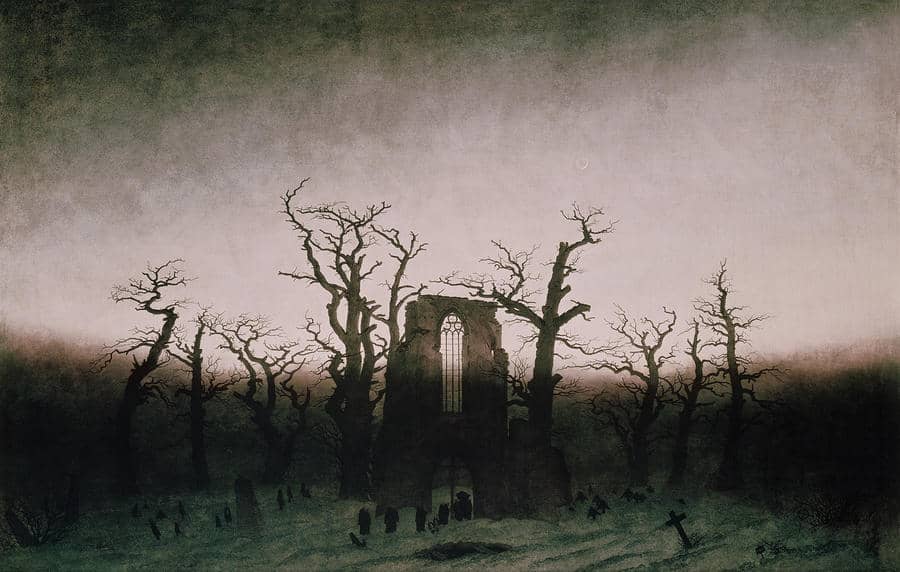

Unlike Burke and Kant, I do not see these paintings by Friedrich and Bierstadt as anything less than both beautiful and sublime. The sublime and the beautiful do not need to necessarily be set in tension. They can coexist. They are not ontological opposites but differing intellectual judgments. This is why the vertical line in this system is called the Intellectual Axis and not the Intellectual Continuum. It is not that sublime is necessarily greater and beauty lesser. Beauty is a judgment about intellectual delight while the sublime is a judgment about the content in relation to the form. Bierstadt’s content of Yosemite Valley clearly exceeds the form of painting. And the painting is one that causes intellectual delight in the viewer and thus exists as both sublime and beautiful.
Jordan Wade’s painting Human Drapery 3 was discussed earlier as being both beautiful and ugly. I intimated that the painting may also be sublime. This painting can be viewed as a meditation on the tension between the Imago Dei and the brokenness of humanity. In the Human Drapery series, Wade painted figures that had undergone reductive surgery and as a result lost tremendous weight leading to drooping, sagging, wrinkled skin. They are a visual representation of the spiritual brokenness of humans manifesting in physical brokenness. They show only the bodies not the faces distancing them from the particularity of individuals to speak broadly of the human condition. At the same time, these paintings are beautifully and painstakingly executed. The care with which the artist paints endows the figures with dignity, unlike the brokenness that the figures highlight. This dignity by the creator that exceeds the bodily form seems analogous to the Imago Dei endowed by the Creator to every human. This reflection, maybe a prayer, on the tension of brokenness and dignity, on depravity and the image of God certainly pushes toward the divine and elevates the content of this painting. As such, this painting should rightly be considered to dwell in the junction of beauty, ugly, and sublime.
Conclusion
Language is a clear problem in articulating the concepts this essay addresses. We tend to apply only one adjective to a noun. So we may say Human Drapery 3 is a beautiful painting, an ugly painting, or a sublime painting. We may go so far as to join two concepts and say the painting has a sublime beauty. But it is awkward to say the painting is a beautiful, sublime, ugly painting. It is important to remember that when describing an object we tend to choose an area of focus rather than seeking to exhaust all characteristics of the object. So, to say a painting is beautiful is to say nothing about its prettiness, ugliness, or sublimity.
It is useful in developing a system that the terminology employed has both philosophical precedence and consonance with common vernacular. A system that is precise but completely disconnected from common usage seems to be of limited use. In fact, it is the way terms such as pretty, beauty, and sublime are used in the artistic and non-academic circles in which I travel that first aroused my interest in this topic. The idea that a painting by Bierstadt cannot, in a Kantian or Burkian system, be both beautiful and sublime is entirely disconnected from common usage. All the nuances of a system cannot be born out through examining the popular vernacular but the basic relationships can be demonstrated. Pretty and ugly reside on the Sensuous Axis. Both have dictionary definitions that support a sensory understanding of these terms. Pretty is “pleasing or attractive to the eye” and ugly is “unpleasant to look at.” By contrast, beauty “gives intense pleasure or deep satisfaction to the mind” and sublimity is “impressing the mind with a sense of grandeur or power.” These definitions indicate a disposition within the broader culture to look at some of these terms as sensuous and others as intellectual.

This essay is a preliminary attempt to think through and articulate the Axis Theory and it still needs development. That said, a two-axis system, as opposed to a continuum system or a system that sets beauty and sublimity at odds, seems to be a move forward. The overlapping designation of terms also helps to alleviate the unnatural tension that often develops when these terms are used philosophically. Kant anticipated many, but not all, of these issues. The reliance on him for philosophical precedent allows this theory to swim in one of the deepest and most profound philosophical aesthetic traditions and to move forward in the light of his wisdom and insight.




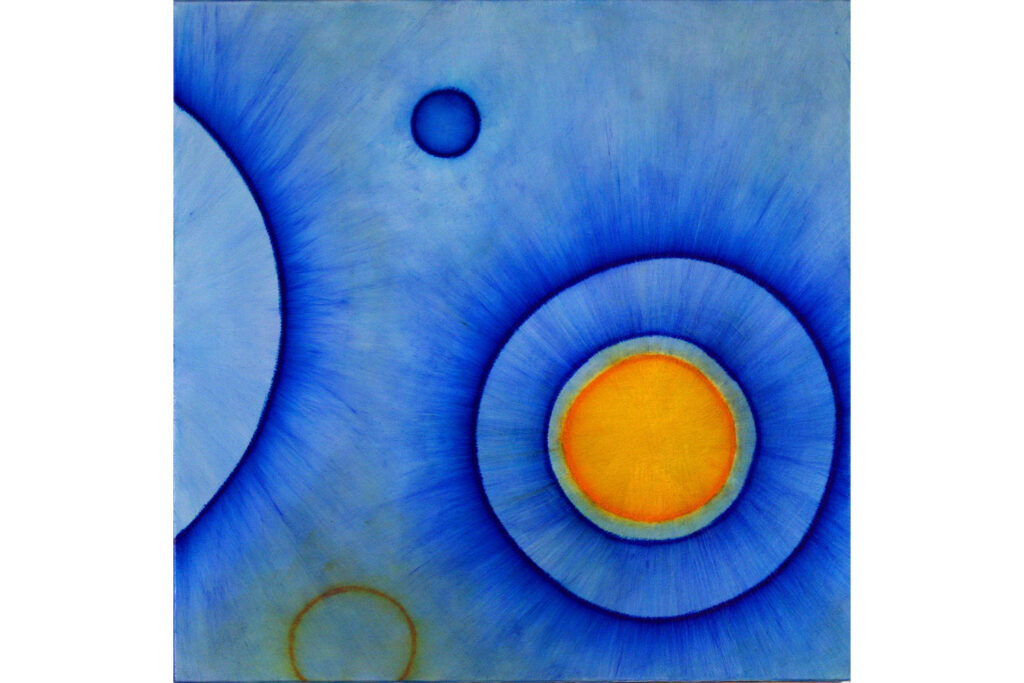

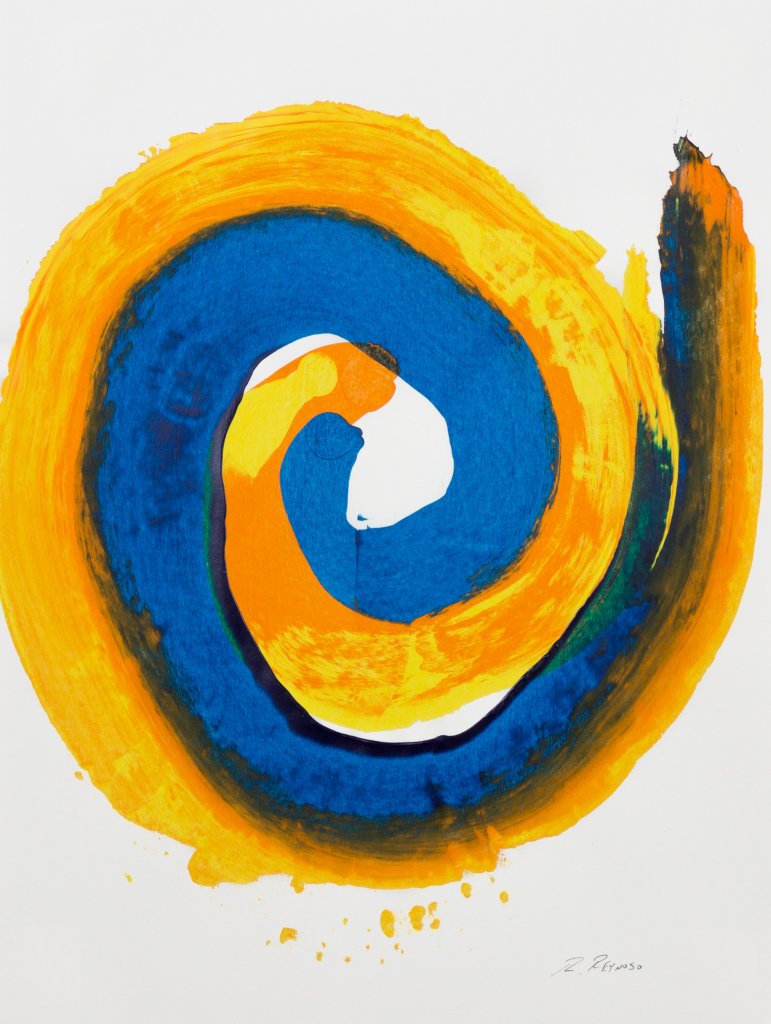
I know you have reasons for using the words you do, but I too will struggle with the word “pretty.” I do agree with the distinction between primarily sensual forms of visual pleasure and those which are perceived through the intellect (or, if we can go that far, through the spirit.) For example, I can envision a woman is pretty, but not truly beautiful. In part, because I see pretty as primarily a surface description, whereas beauty communicates depth beyond the surface. (It would be possible for woman who is not found pretty, to be found beautiful. (And, given yet other usage, I might find that a persona is externally ugly, but in total, beautiul) But even when speaking only in sensory terms, pretty just doesn’t have the same nuance as beautiful. Pretty appears to be a smaller idea, it contains the ideas of detail, fragility, surface, even femininity. Beauty on the other hand, is at home with simplicity, power, essence, even majesty. (while I probably would not use the term, I can more readily see a man as beautiful than as pretty (unless he is in fact, delicate or feminine.) So…In order for this larger diagram to work, I am going to have to make the real effort to “re-hear” the the words pretty, and beautiful.
I’m not an artist, so you are getting this novice’s take on these works.
It’s interesting to me that Kinkade’s work above might be considered pretty. To my eye it is troubling. Annoying as well. Some of his other work I will admit to being “pretty”, though extremely saccharine. What I can’t say is that his work is deep or that it makes me think. It doesn’t require a second look. It is what it is and that’s that … walk on by.
I find Bierstadt’s work pretty, albeit it a bit troubling as well since it’s not what Yosemite looks like. I have to look at it as its own thing rather than Yosemite, actually. Then I enjoy it. I might say “beautiful” rather than “pretty”. Pretty is fleeting. Beauty is deeper.
Just my take on those words!
I could go on and on, but I ramble too often and just thought I’d at least jump in here, say “hi”, and let you know I’m trying to remember to read your blog! :-)
A most intriguing subject. I sometimes wonder about this problem on another level. I find that in the photography world, we generally prefer some level of distortion or decay over generic beauty. We prefer to view the weathered face, the ramshackle barn, the peeling sign, the rusted car etc over those forms which are simply pretty in a generic way. Who takes pictures of suburbia? (I know someone does, but on the whole, generic pretty is far more challenging to capture, unless it can be given some kind of Stepford-wive’s vibe. I guess we have our Southern Comfort Magazines and paintings by Kincade (sp?) but we rarely think of those images of styled beauty as being truly artful. So why is it, that we… who prefer to posses a generically beautiful face, or a suburban home (as opposed to a spray painted tenement house…) still prefer the latter in images. The world I seek to create around myself, is not a world I traditionally want to examine with art.
ps. I sometimes feel this question on a different level. I view and respond to art in which ugliness is strong component. Yet I sometimes feel checked in my soul when I intentionally produce such works. It is part of the “Whatsoever” admonition. (Ie, Whatsoever things are lovely, whatsoever things are pure, whatsoever things are noble….if there be any virtue, if there be any praise.. think on these things. (Loose from memory) So, while I respond and enjoy works in which ugliness plays a prominent theme, I find I can only go so far before conviction sets in. Same with sex themes. I view more in this realm than I feel comfortable producing, for the same reason. I expect to answer for the tastes I cultivate in myself, and those that I might forge in another. So I never feel the artistic liberty to do what I would, because I feel constrained by the idea that I must answer to God for what I savor — or encourage.